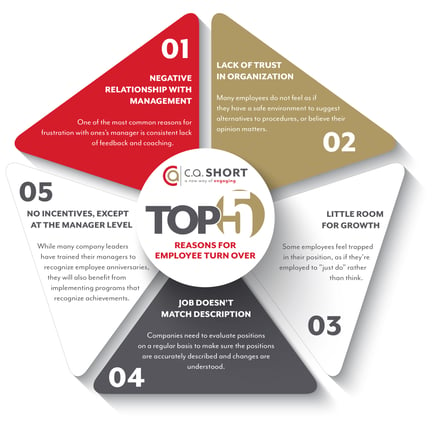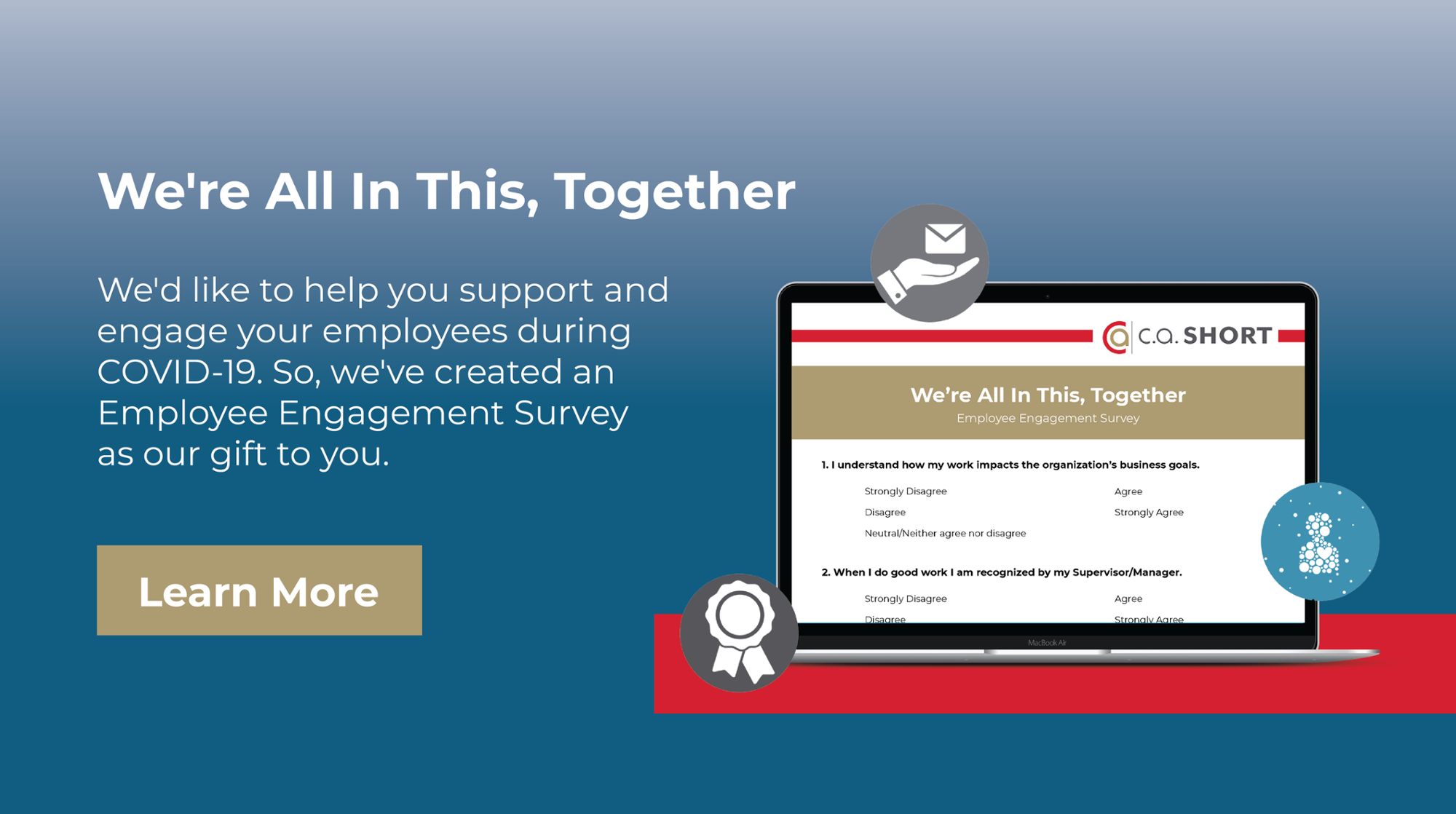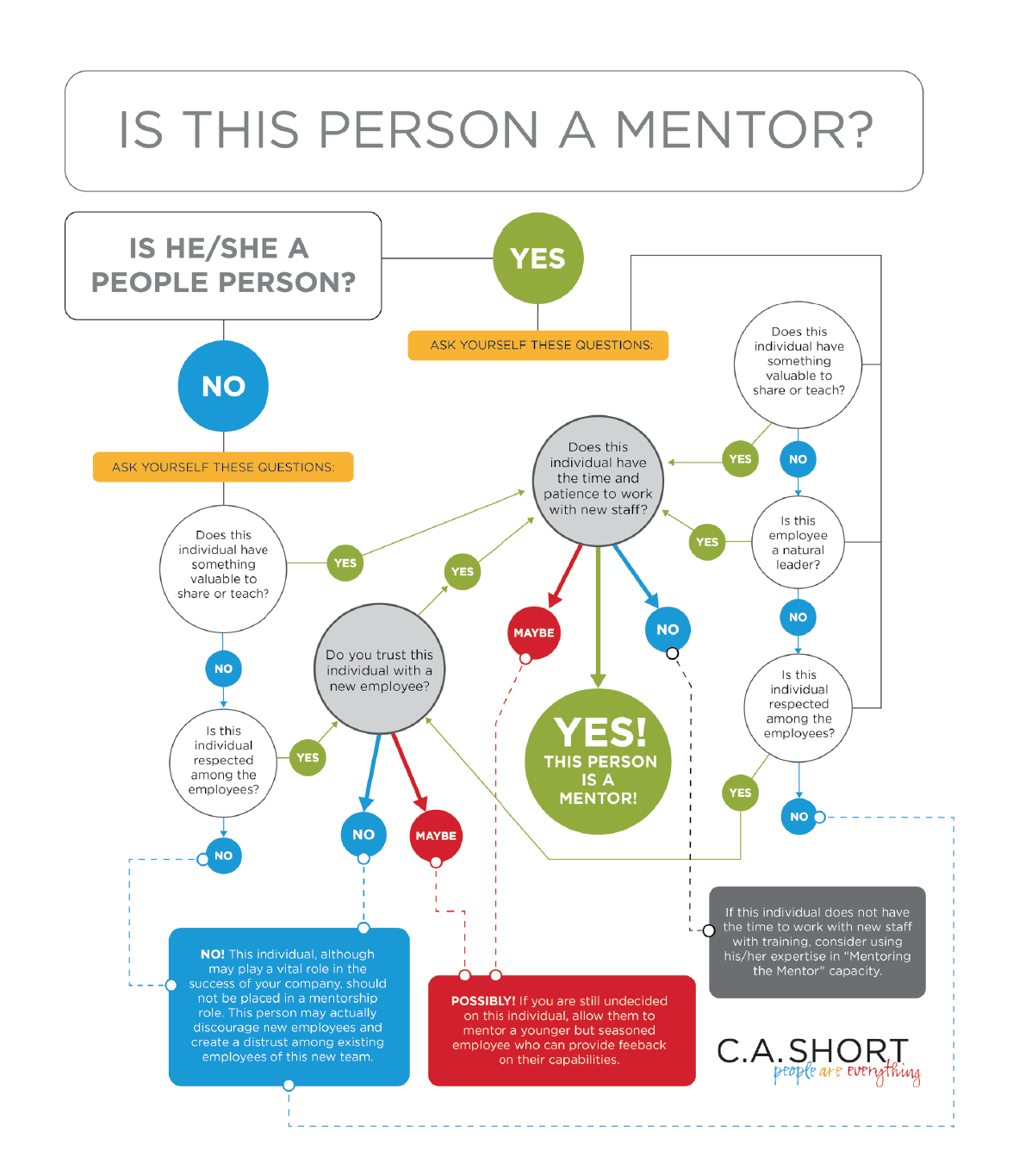If an organization's culture produces a high turnover rate, the result is excessive recruitment and training costs. Research shows that employers spend up to 30 percent of the average employee annual salary for each turnover.
This means for every position that pays $10 an hour, it could cost around $3,000 to hire and train someone new.
High turnover also puts extra strain and responsibilities on others and creates an atmosphere of insecurity and negativity. This could lead to even a higher number of turnovers in an organization which risks damaging its public reputation. Also, don't assume that salary is the number one reason why people job hop. Research shows that 88 percent of people cite another reason as the main cause.
With people being one of the largest business expenses, it makes sense to understand the reasons they leave your organization.
Five Top Reasons for Employee Turnover
1. Negative Relationship with Management
Many bad managers are the result of bad managers. This cycle continues when proper communication and leadership tools are not passed down in an organization. One of the most common reasons for frustration with one's manager is consistent lack of feedback and coaching. This lack of guidance places stress on employees who do not feel as if their work is valuable.
2. Lack of Trust in Organization
Research shows that only 39 percent of employees trust that their senior management cares about their well-being. Employees also develop a mistrust when they see antiquated policies used without evaluation. Many employees do not feel as if they have a safe avenue to suggest alternatives to procedures, or believe their opinion matters.
3. Little Room For Growth
If a person feels the only way to move up and progress in their career is to look outside of the company, they will. They also can get lost in the mission of efficiency: feeling as if they're employed to "just do" rather than think. Established mentorship programs and career path opportunities help employees flourish. They will not feel trapped in a position if they have the opportunity to learn and grow their professional lives.
4. Job Doesn't Match Description
A large percentage of turnover happens in the first six months when the job that was agreed upon does not reflect the work assigned. When the job is not as promised, an employee becomes distrusting of the employer. Companies need to evaluate positions on a regular basis to make sure the positions are accurately described and changes are understood.
5. No Incentives Except At The Manager Level
The antithesis of an incentive is to work hard so someone else gets the credit. A paycheck is not incentive enough to engage employees in hard work. While many company leaders have trained their managers to recognize employee anniversaries, they will also benefit from implementing programs that recognize achievements.
Research supports this by showing that employee achievement programs create:
- Trusting work environments
- Positive cultures
- Significant reduction in the cost of employee turnover and recruitment
Improving Your Employee Retention
Now that we have recognized the factors that play an important role in affecting employee turnover, we can discuss solutions for boosting employee morale and retention.
Show Your Commitment To Your Employees
As discussed above, employees want to have opportunities for growth, as well as feel recognized as a valued member of the team. By providing training programs, recognition initiatives, and defined goals you can showcase your commitment to your employees and help them succeed within your company. Incentive programs such as our People Are Everything™ platform allows you to easily recognize your employees’ accomplishments by rewarding them with points they can exchange for gadgets, experiences, concert tickets, and more. Incentive programs can help you boost employee engagement while increasing productivity.
Make Your Business Culture One of Your Biggest Selling Points
Company culture can be utilized as a valuable tool during the hiring process for attracting high-quality talent. By working with human resources to cut off turnover traps and build a trusting and productive atmosphere, you can work towards obtaining and keeping good employees who are dedicated to your company.
Establish a Culture of Engagement
By establishing a culture of engagement you can ensure that your employees are motivated, connected, and committed to company goals. By promoting employee engagement you can improve retention rates, decreasing recruitment and training costs. Highly engaged employees are also 21% more productive. A culture of engagement can help you encourage creative thinking, foster employee growth, and increase return on investment.
Many factors can play a part in an employee’s decision to leave your company. By stimulating a positive company culture and encouraging employees you can help decrease staff turnover and increase employee retention. At C.A. Short Company, we are dedicated to helping companies build a solid foundation for employee recognition and improving retention and turnover rates. Contact us today to learn how we can help improve your company culture and engage your employees.
Editor's Note: This article was originally published on July 2, 2018 and has been recently updated.







.jpg)



SHARE